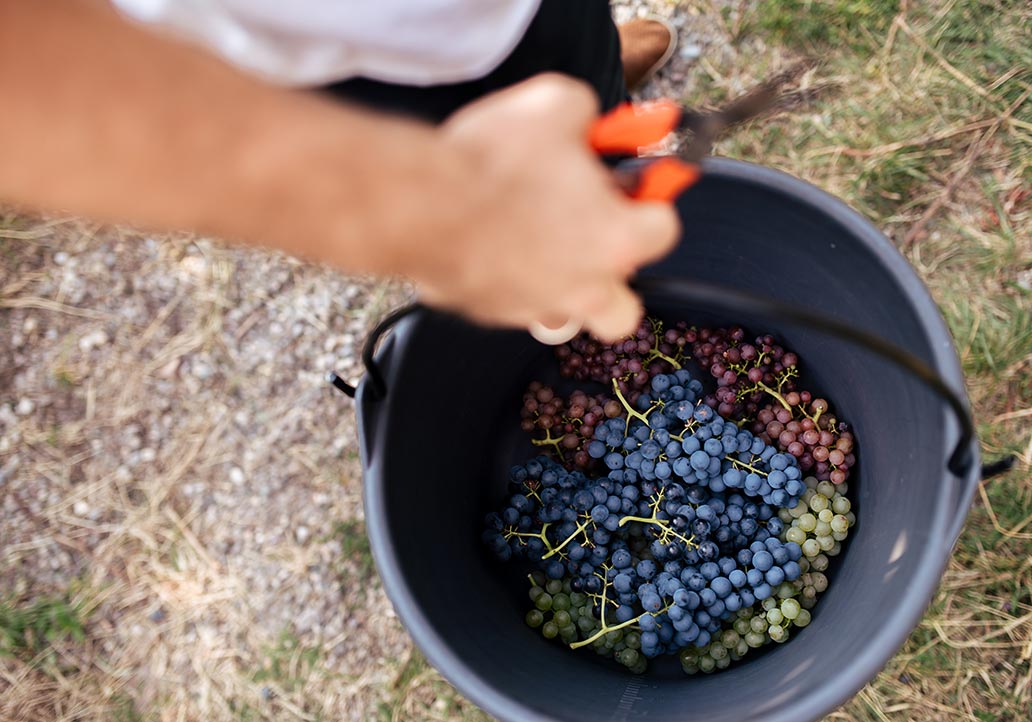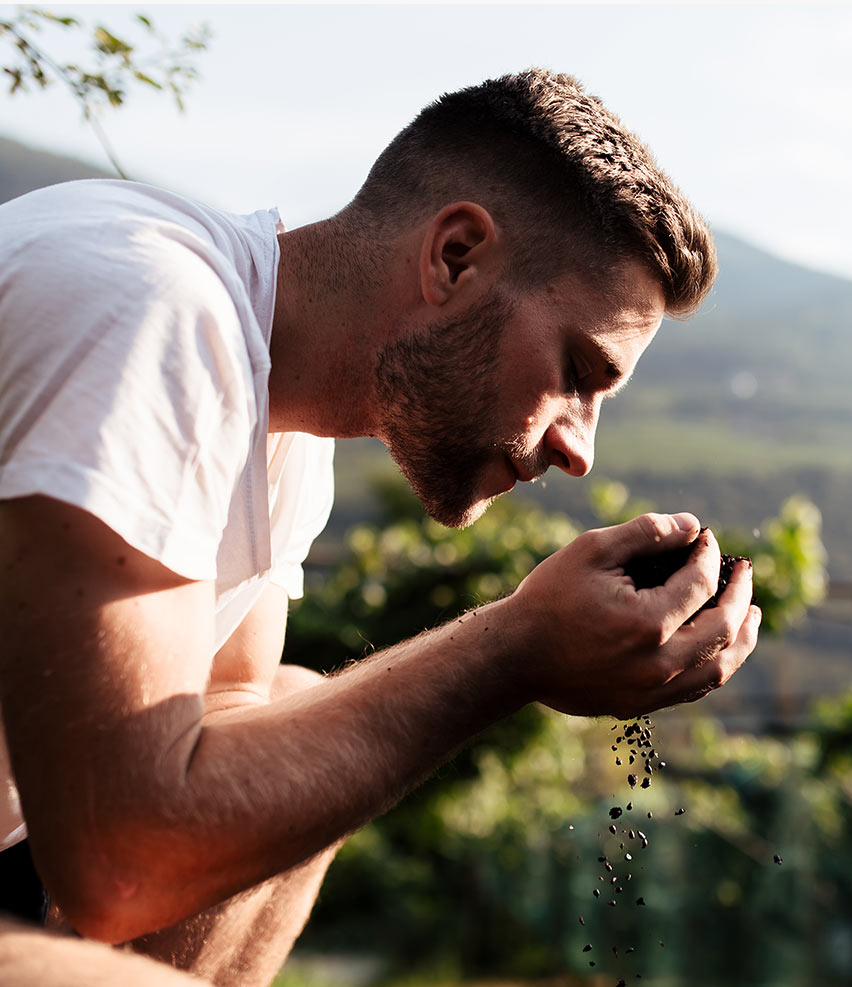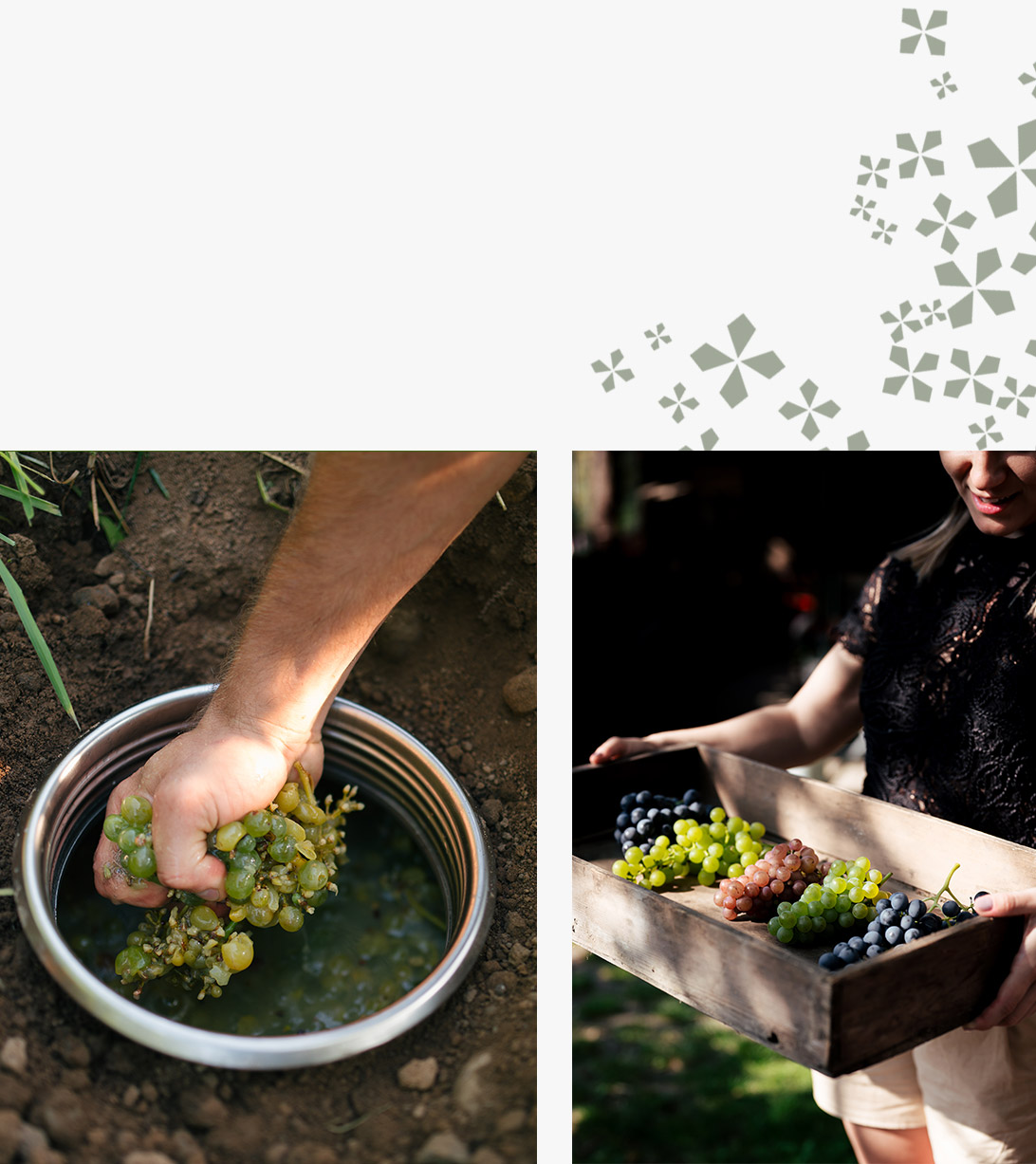Our
vineyards
The vine roots deeply until it
findswhat it needs to reach
its equilibrium.
The vineyards are located primarily on steep terrain with slopes of up to 40%. This requires a lot of manual work and precision.
The wide variety of soil structures, special microclimate and many hours of sunshine, combined with adequate ventilation, are determining factors. These, in combination with management of grassed areas suited to the location have led to the accumulation of humus, while the home-produced compost we have brought in has created fertile, living soil.
The working practices and planned operations implemented in the vineyard should not affect natural processes if possible. Innovative thinking in combination with forgotten methods is the best way to achieve harmony between soil, plants, animals and ourselves, the Ramoser vintner family.

The energy of the wines inspires and helps us to enjoy the fullness of the moment.
The energy of the wines inspires and helps us to enjoy the fullness of the moment.

Our
soils
Our most important asset is fertile soil. It is the foundation for the production of our high quality wines. We therefore seek to protect it from negative impacts and to continually improve its quality.
The interaction between climate factors and terroir come particularly to the fore in our wines.
Our vines grow on gravel, sand, limestone moraines and clay. Porphyry, a volcanic rock, lies directly below the fertile topsoil, which ranges from a few centimetres up to several meters deep. A characteristic of all our locations is northerly and southerly winds. These alternate twice daily, cooling the vineyards down at night, but provide warmth during the day. The combination of all these factors affects the character of our grapes, which we vinify in as natural a state as possible. This process sets us a new challenge every year.
Our
wine cellar
Crispness. Elegance. Structure. These are probably the most appropriate terms to determine how the grapes are handled in the cellar. The perfect harvesting time is carefully established. The grapes are handled as gently as possible. Refreshing, luscious and meticulously made are the qualities that customers should experience.
We leave our wines to develop in steel tanks and wooden barrels for the time required, depending on variety and style. Our underground cellars are suitable for storing wine in wooden barrels and provide sufficient humidity and cool temperatures during the hot summer months.
Our
white wines
After destemming, our white wines are left in contact with the skins for a few hours before being pressed as gently as possible. The grape must is left to clarify naturally overnight. After so-called sedimentation, the clear must is drawn off and fermented in the barrel. The yeasts used in some of the fermentation processes come from the vineyard. The finished wine then matures for a few months on all its lees to enable it to develop harmonically.
Our
red wines
Our red grapes are in the main destemmed. Depending on the vintage, grape stems are included in fermentation in a controlled manner. Gentle pumping over extracts velvety tannins, colour and fruity aromas from the skins. This imparts character in the Fliederhof wines. When the alcoholic fermentation is complete, the skins are gently pressed and the wine is left to develop, most of it in wooden barrels.
Biodynamic
wine
A healthy, fertile vineyard ensures our livelihood. That is why we use biodynamic farming principles in our vineyards. Biodynamic farming to us means walking through our vineyards and using all our senses to preserve the harmony of nature. The vineyard is viewed as a single unit and not merely as individual vines. Plants and living organisms come together to form complex ecosystems. It is our duty to intervene by merely guiding nature, without disturbing the equilibrium of the habitat.

In practice this means doing away with chemical or synthetic pesticides, herbicides and mineral fertilisers. Instead, we maintain our soils through the targeted application of compost and sowing ground cover plants over the winter months to expand biodiversity. In order to prepare our wines for the challenges that lie ahead, we treat them with infusions made from a wide variety of plants, such as horsetail, nettles and valerian. While to build up humus, we apply horn manure to the bare soil. In order to improve absorption of the sun’s energy, we apply horn pebbles in the early hours of the morning. Here we rely on the effects that cosmic energy from the moon and planets have on our soil.
Every day we discover and understand new relationships and develop new approaches to solutions. We react flexibly to the conditions of nature. In recent years we have carried out numerous experiments in sustainable organic vineyard management. The strips between the vines have always been planted with greenery.


In autumn, grasses and leguminous and cruciferous plants are sown here, which bloom in full splendour in spring and improve the structure and fertility of the soil. We are also gradually transitioning to a form of vine pruning that reduces pruning wounds, which is intended to maintain the health of our up to 70-year-old vines. From 2021 onwards, our vines will be farmed in accordance with the guidelines for biological methods of plant protection. This means that no type of synthetically manufactured pesticides shall be used. The conversion is supported to a great extent by the positive effects of homemade nettle and horsetail plant extracts.






